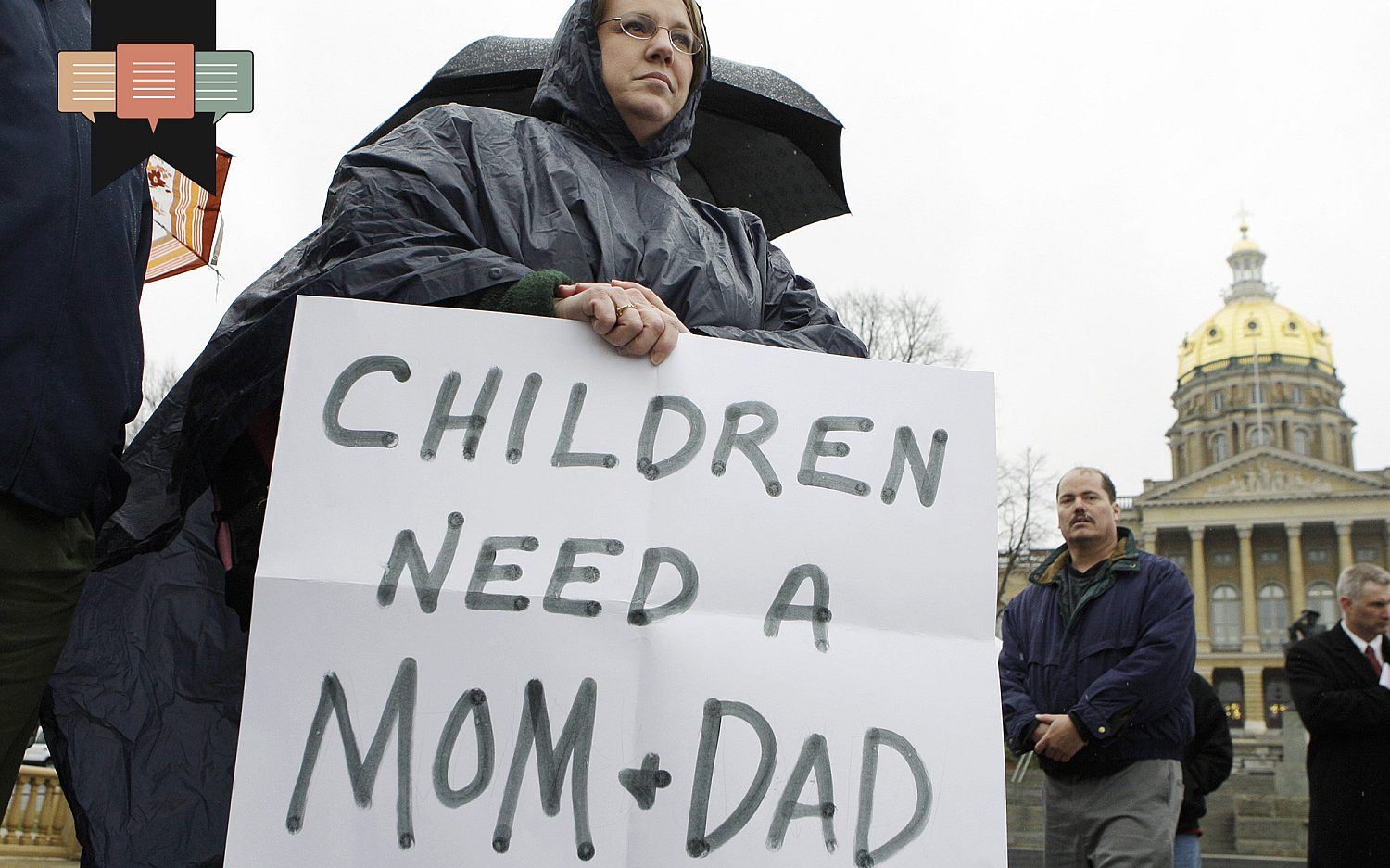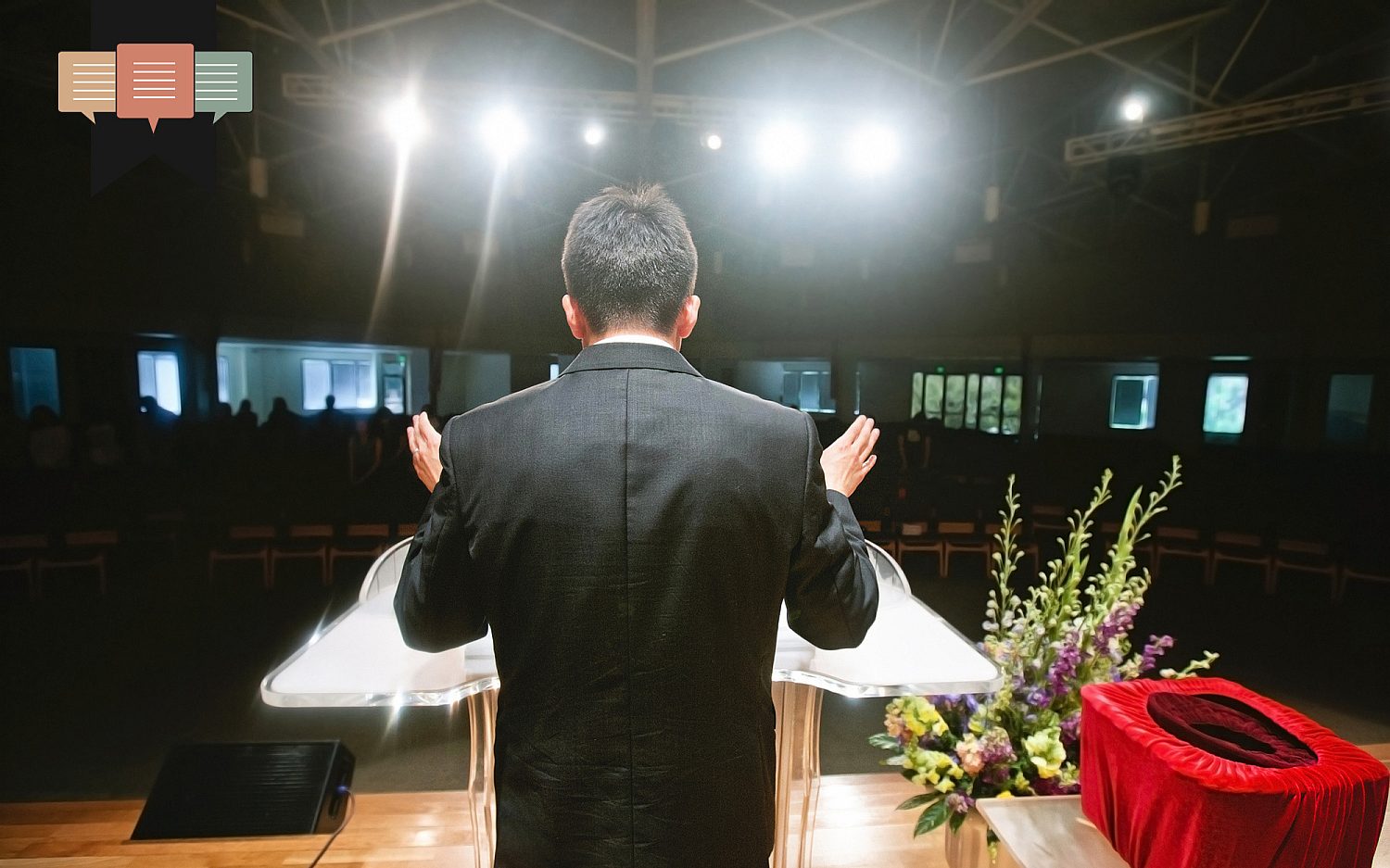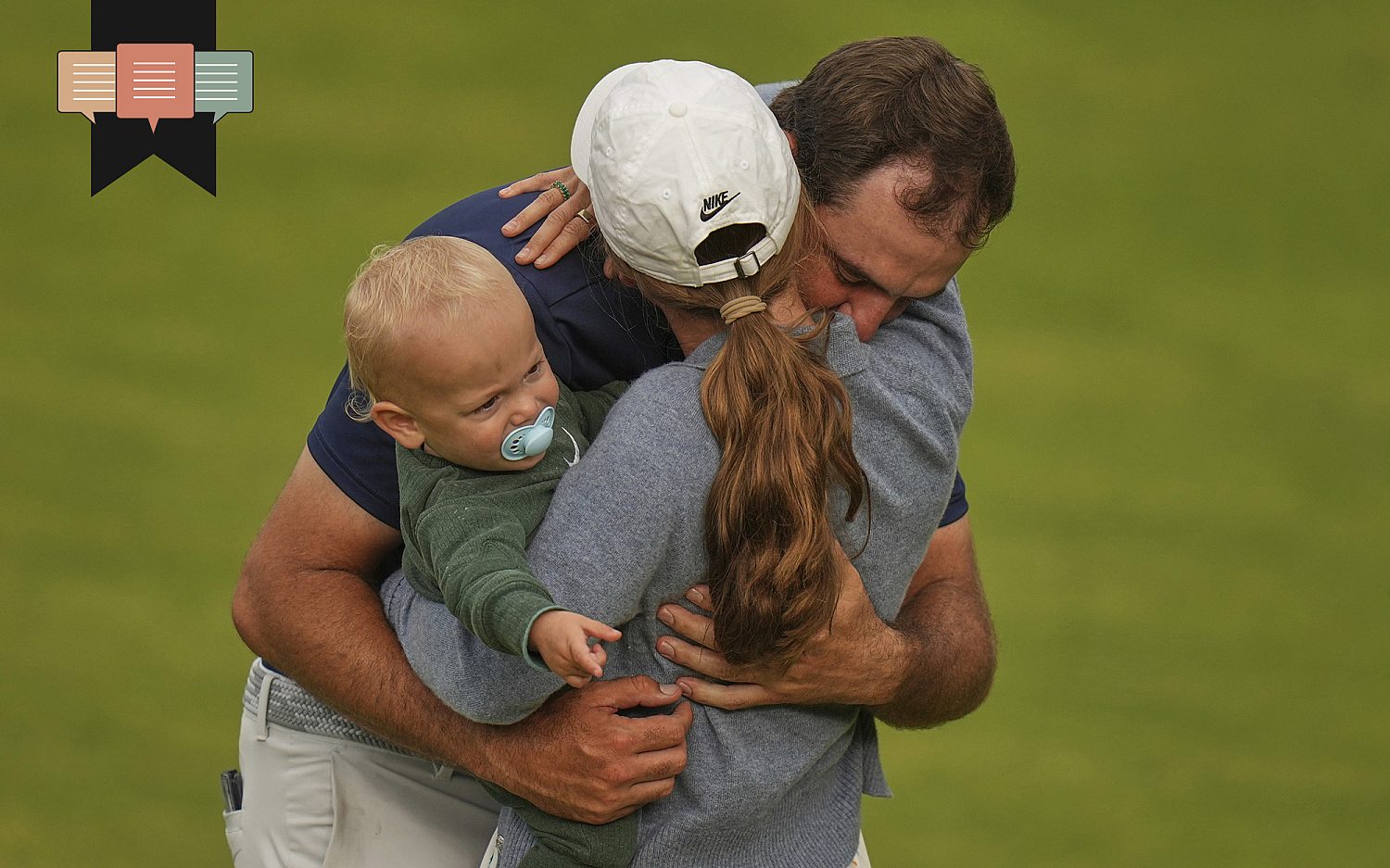The myth of “no difference”
What the data really say about same-sex parenting
A woman holds a sign during a rally in Des Moines, Iowa, on April 13, 2009. Associated Press / Photo by Charlie Neibergall

Full access isn’t far.
We can’t release more of our sound journalism without a subscription, but we can make it easy for you to come aboard.
Get started for as low as $3.99 per month.
Current WORLD subscribers can log in to access content. Just go to "SIGN IN" at the top right.
LET'S GOAlready a member? Sign in.
The recent video of two men celebrating the milestones of their surrogate-born son went viral on X—not just for the novelty of two dads and a baby, but because one of those men was revealed to be a registered child sex offender. It’s the kind of story that has many asking: What do we really know about the outcomes for children raised by same-sex couples, even those not already flagged by law enforcement?
The answer is simple: Children raised by two men or two women fare worse overall than those raised by their married, biological mother and father. But if you’ve ever debated same-sex parenting, you’ve probably heard the claim that based on 75 studies and “over three decades of peer-reviewed research … having a gay or lesbian parent does not harm children.” The American Psychological Association hails that figure as proof of consensus. On the surface, it sounds convincing. But a “lot of studies” does not equal “good science.”
Most of those 75 “no difference” studies fail basic research standards. Roughly 85 percent rely on convenience samples—families recruited through LGBT organizations, fertility clinics, or word-of-mouth, not randomly selected. Nearly all use parent-reported surveys rather than independent assessments. Many examine tiny populations, sometimes under 30 children. And because participants were told the studies’ goals, responses were often shaped to support a desired narrative rather than reflect reality.
By the same criteria, critics dismiss the handful of older studies that found negative outcomes for children with gay or lesbian parents. Sirota (1997, 1999) studied 68 adults raised by gay or bisexual fathers and found they were more likely to show insecure attachment, identity confusion, and strained parental relationships than population norms. Barwick & Siegel (2002) followed 30 teens from lesbian households and documented more anxiety and withdrawal than average. Sarantakos (1996) found those with same-sex parents scored lower in math and language and struggled more socially than peers with married biological parents. These studies are usually cast aside as unrepresentative and methodologically weak. But applying that same filter discards most of the 75 “no difference” studies leaving just one positive gold-standard study: Mazrekaj et al. (2020), which evaluated 2,971 children raised from birth by same-sex parents.
Junk science created a junk consensus.
What we knew before the ideology
Before the 2000s, there was no confusion about which family structure best met children’s needs. Leading family scholars—Sara McLanahan and Gary Sandefur (Growing Up with a Single Parent, 1994), Paul Amato (Journal of Marriage and Family, 1991, 2001), David Popenoe (Life Without Father, 1996), and Judith Wallerstein (The Unexpected Legacy of Divorce, 2000)—all concluded the same: Children thrive most with their married, biological mother and father. Biological parents are the most invested, protective, and connected caregivers. Loss through death, divorce, or abandonment leaves lasting scars. And mothers and fathers offer distinct, complementary contributions to child development. But that doesn’t match the new dogma—so the data were rewritten.
The miraculous reversal
In the era of same-sex marriage, every child in a same-sex household is missing (at least) one biological parent—a factor that alone increases the risk of abuse and neglect—and lacks the unique influence of either a mother or a father. And yet, we’re told, these children fare “no different” than those raised by their own mom and dad.
The only way to explain this “sociological miracle” is bias. We are looking at research agendas that protect adult desires rather than reflect child realities. With persistent questioning, Grok ( X.com’s artificial intelligence chatbot) was forced to admit the shift stems from “societal pressures, funding biases, and ideological shifts in academia post-1990s … aligning with LGBTQ+ advocacy,” with many “no difference” studies suffering from convenience sampling and self-reports, selectively cited to fit equality narratives.
The real data
Why did weak studies shape the public consciousness? Because strong research is hard to produce. Same-sex couples make up just 1% of U.S. households, and only about 15% of those couples are raising children (U.S. Census Bureau, 2021). Finding a random sample of those children, tracking them over time, and measuring objective outcomes is a massive undertaking. But a few scholars have done it.
In 2012, sociologist Mark Regnerus published the New Family Structures Study in Social Science Research. Surveying nearly 15,000 adults (ages 18–39) from a nationally representative sample, he found that adults whose parent had a same-sex relationship fared worse than peers from intact biological families on 25 of 40 outcomes, including education, mental health, welfare dependence, and relationship stability. For this, activists tried to destroy him professionally. A decade later, his findings were vindicated. Further study confirms that not one of the two million significant alternatives for analytical evaluation resulted in positive outcomes for LGBT-parented children.
Regnerus produced one gold-standard study. Paul Sullins produced two. The first, using Add Health data (2015), analyzed over 12,000 adolescents, including 20 raised by same-sex parents. Published in the British Journal of Education, Society & Behavioural Science (Vol. 7, 2015), Sullins found these adolescents had significantly lower autonomy, higher anxiety, and higher depressive symptoms than those with opposite-sex parents, despite better grades. Disturbingly, he reported that while no children of opposite-sex parents reported parent-perpetrated sexual abuse, 38% of those with married same-sex parents did (p. 84).
The second study drew from the National Health Interview Survey (2015), analyzing 1.6 million cases, including 512 same-sex parent families. Published in the Journal of Scientific Research & Reports (Vol. 4, 2015), Sullins concluded: “Children in same-sex parent families have a 2.6 times greater risk of emotional problems than children with opposite-sex married parents, controlling for income and education.”
As Sullins notes, “Because same-sex couples cannot both be the biological parents of any child, they can never replicate the benefits that biological parenthood confers. The primary benefit of marriage for children is that it presents them with their own parents. Same-sex marriage, by definition, cannot.”
When rigorous methods are applied, “no difference” becomes “significant, harmful difference.”
The ideological mood among scholars may change. But children’s needs—who they are, where they come from, and what they require—do not.
These daily articles have become part of my steady diet. —Barbara
Sign up to receive the WORLD Opinions email newsletter each weekday for sound commentary from trusted voices.Read the Latest from WORLD Opinions
John Mac Ghlionn | The ubiquity of female tattoos signals a crisis among American women
Daniel Darling | It’s revealing that the errors in reporting on the Israel-Hamas war always benefit one side
Josh Reavis | Pastors will sometimes misspeak in the pulpit, but a gracious God can still be at work
Les T. Csorba | A champion’s humility in a fame-obsessed culture






Please wait while we load the latest comments...
Comments
Please register, subscribe, or log in to comment on this article.